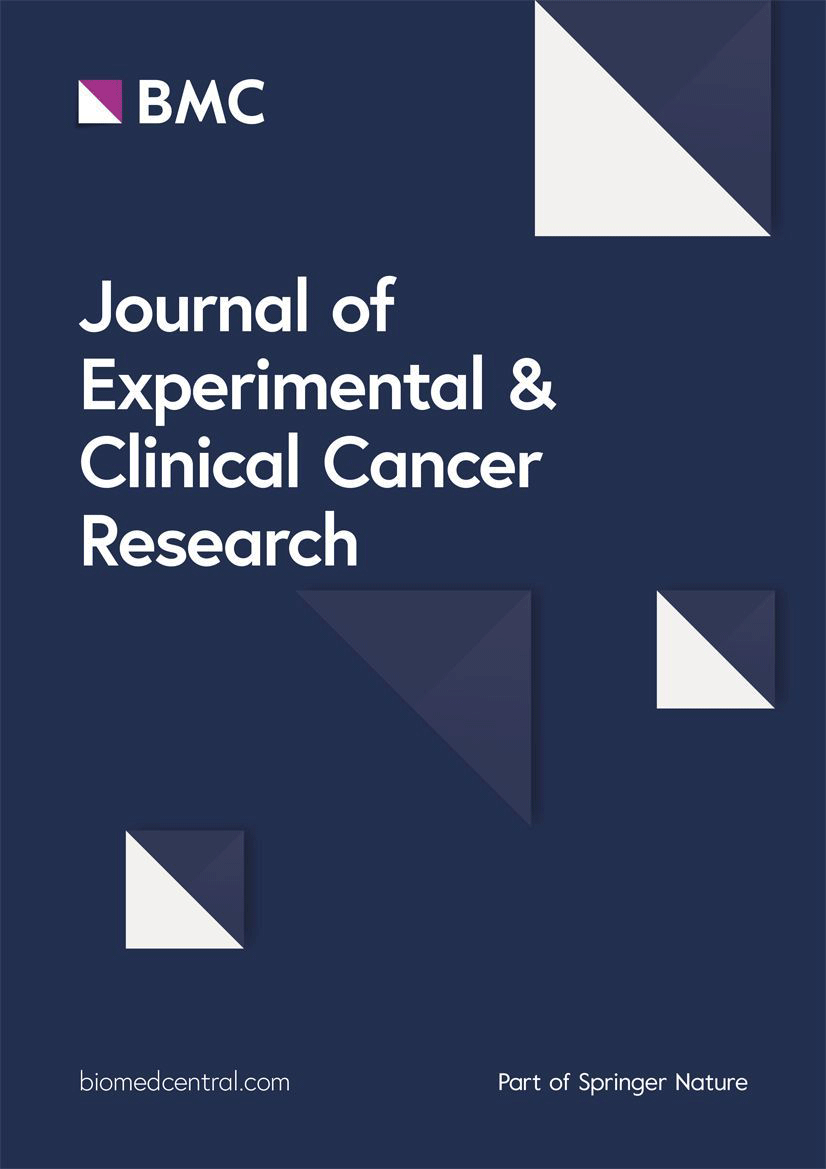STUB1-mediated K63-linked ubiquitination of UHRF1 promotes the progression of cholangiocarcinoma by maintaining DNA hypermethylation of PLA2G2A
IF 11.4
1区 医学
Q1 ONCOLOGY
Journal of Experimental & Clinical Cancer Research
Pub Date : 2024-09-13
DOI:10.1186/s13046-024-03186-6
引用次数: 0
Abstract
Cholangiocarcinoma (CCA) is a highly malignant tumor characterized by a lack of effective targeted therapeutic strategies. The protein UHRF1 plays a pivotal role in the preservation of DNA methylation and works synergistically with DNMT1. Posttranscriptional modifications (PTMs), such as ubiquitination, play indispensable roles in facilitating this process. Nevertheless, the specific PTMs that regulate UHRF1 in CCA remain unidentified. We confirmed the interaction between STUB1 and UHRF1 through mass spectrometry analysis. Furthermore, we investigated the underlying mechanisms of the STUB1-UHRF1/DNMT1 axis via co-IP experiments, denaturing IP ubiquitination experiments, nuclear‒cytoplasmic separation and immunofluorescence experiments. The downstream PLA2G2A gene, regulated by the STUB1-UHRF1/DNMT1 axis, was identified via RNA-seq. The negative regulatory mechanism of PLA2G2A was explored via bisulfite sequencing PCR (BSP) experiments to assess changes in promoter methylation. The roles of PLA2G2A and STUB1 in the proliferation, invasion, and migration of CCA cells were assessed using the CCK-8 assay, colony formation assay, Transwell assay, wound healing assay and xenograft mouse model. We evaluated the effects of STUB1/UHRF1 on cholangiocarcinoma by utilizing a primary CCA mouse model. This study revealed that STUB1 interacts with UHRF1, resulting in an increase in the K63-linked ubiquitination of UHRF1. Consequently, this facilitates the nuclear translocation of UHRF1 and enhances its binding affinity with DNMT1. The STUB1-UHRF1/DNMT1 axis led to increased DNA methylation of the PLA2G2A promoter, subsequently repressing its expression. Increased STUB1 expression in CCA was inversely correlated with tumor progression and overall survival. Conversely, PLA2G2A functions as a tumor suppressor in CCA by inhibiting cell proliferation, invasion and migration. These findings suggest that the STUB1-mediated ubiquitination of UHRF1 plays a pivotal role in tumor progression by epigenetically silencing PLA2G2A, underscoring the potential of STUB1 as both a prognostic biomarker and therapeutic target for CCA.STUB1 介导的 K63 链接泛素化 UHRF1 通过维持 PLA2G2A 的 DNA 高甲基化促进胆管癌的进展
胆管癌(CCA)是一种高度恶性的肿瘤,其特点是缺乏有效的靶向治疗策略。蛋白质 UHRF1 在保护 DNA 甲基化方面发挥着关键作用,并与 DNMT1 协同作用。转录后修饰(PTM),如泛素化,在促进这一过程中发挥着不可或缺的作用。然而,CCA中调控UHRF1的特定PTM仍未确定。我们通过质谱分析证实了 STUB1 和 UHRF1 之间的相互作用。此外,我们还通过共IP实验、变性IP泛素化实验、核-胞质分离和免疫荧光实验研究了STUB1-UHRF1/DNMT1轴的内在机制。通过 RNA-seq 鉴定了受 STUB1-UHRF1/DNMT1 轴调控的下游 PLA2G2A 基因。通过亚硫酸氢盐测序 PCR(BSP)实验评估启动子甲基化的变化,探索了 PLA2G2A 的负调控机制。我们使用 CCK-8 试验、集落形成试验、Transwell 试验、伤口愈合试验和异种移植小鼠模型评估了 PLA2G2A 和 STUB1 在 CCA 细胞增殖、侵袭和迁移中的作用。我们利用原代 CCA 小鼠模型评估了 STUB1/UHRF1 对胆管癌的影响。研究发现,STUB1 与 UHRF1 相互作用,导致 UHRF1 的 K63 链接泛素化增加。因此,这促进了 UHRF1 的核转位,并增强了其与 DNMT1 的结合亲和力。STUB1-UHRF1/DNMT1 轴导致 PLA2G2A 启动子的 DNA 甲基化增加,进而抑制其表达。STUB1 在 CCA 中的表达增加与肿瘤进展和总生存期成反比。相反,PLA2G2A 在 CCA 中通过抑制细胞增殖、侵袭和迁移发挥抑瘤作用。这些研究结果表明,STUB1 介导的 UHRF1 泛素化通过表观遗传沉默 PLA2G2A,在肿瘤进展过程中发挥了关键作用,这凸显了 STUB1 作为 CCA 预后生物标志物和治疗靶点的潜力。
本文章由计算机程序翻译,如有差异,请以英文原文为准。
求助全文
约1分钟内获得全文
求助全文
来源期刊
CiteScore
18.20
自引率
1.80%
发文量
333
审稿时长
1 months
期刊介绍:
The Journal of Experimental & Clinical Cancer Research is an esteemed peer-reviewed publication that focuses on cancer research, encompassing everything from fundamental discoveries to practical applications.
We welcome submissions that showcase groundbreaking advancements in the field of cancer research, especially those that bridge the gap between laboratory findings and clinical implementation. Our goal is to foster a deeper understanding of cancer, improve prevention and detection strategies, facilitate accurate diagnosis, and enhance treatment options.
We are particularly interested in manuscripts that shed light on the mechanisms behind the development and progression of cancer, including metastasis. Additionally, we encourage submissions that explore molecular alterations or biomarkers that can help predict the efficacy of different treatments or identify drug resistance. Translational research related to targeted therapies, personalized medicine, tumor immunotherapy, and innovative approaches applicable to clinical investigations are also of great interest to us.
We provide a platform for the dissemination of large-scale molecular characterizations of human tumors and encourage researchers to share their insights, discoveries, and methodologies with the wider scientific community.
By publishing high-quality research articles, reviews, and commentaries, the Journal of Experimental & Clinical Cancer Research strives to contribute to the continuous improvement of cancer care and make a meaningful impact on patients' lives.

 求助内容:
求助内容: 应助结果提醒方式:
应助结果提醒方式:


